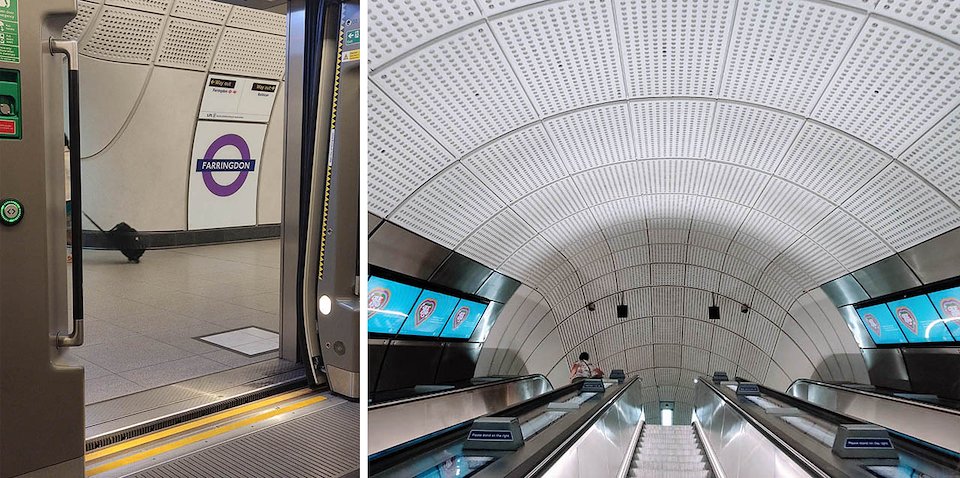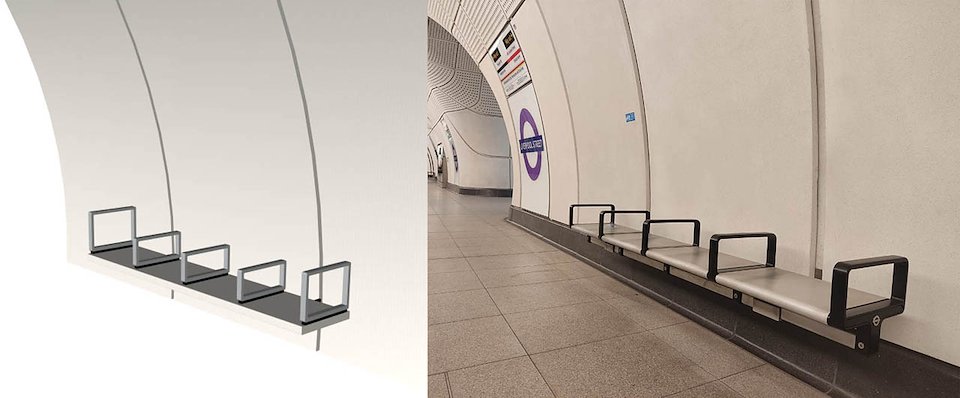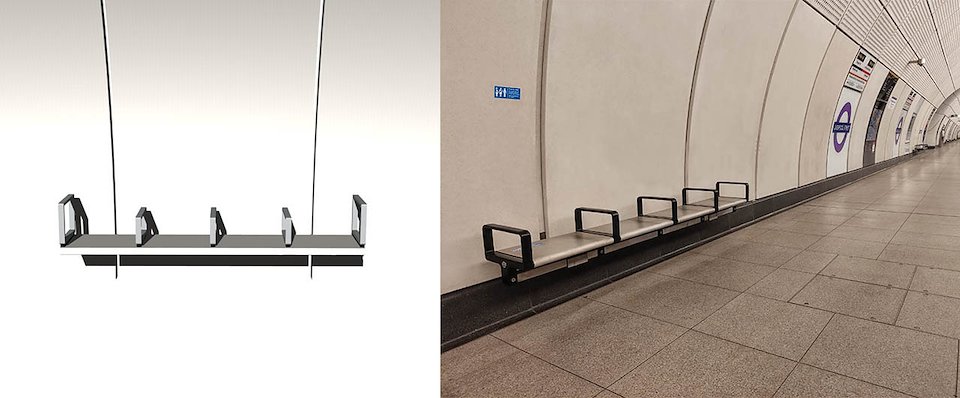Commuter experienceCrossrail Ltd
Designing elements for a Transit system at a component level requires going under the skin of those components. When a multi-disciplinary design team comes together to design a Transit system, one of the things that the operator wishes to improve is the 'Commuter experience'.
Project overview here: https://misterblack.co.uk/projects/7163633

A calm, visually uncluttered and acoustically tuned 'Commuter experience' from Train to Station exit
But, how as both a 'customer' and 'user' of the system can an attractive Transit facility come into being? A key driver and overarching term used in Transport systems is 'Passenger / Commuter comfort'. It is often mentioned by operators – whether it takes the form of Metros, Railways, Airports, Light Rail systems or Buses.
What does Passenger comfort mean?
It is one thing to find comfort in an element at a physical level of touch. The most obvious being a seat on a Train or a bench on a Platform. The less obvious are other touchpoints such as wayfinding (decision making) within the journey, clarity of the physical space (platform, cross passages, concourse, escalators, gateline & entrance / exit) in combination with material selections, that together can improve lighting & acoustic performance. We often talk about how a Transit system looks, but not often do we talk about how it sounds. The last item can together with the other components form the sound 'character' and identity to the Transit system.

Developed as Project Industrial designer. Co-design with Grimshaw Architects& Atkins.

Early design intent for Platform Bench - 2009 (above & below left)
Actual bench in Elizabeth Line platform - 2022 (above & below right)
But, what about the intangible elements such as Lighting and Acoustics? Lighting can dazzle, make you feel uncomfortable or can make you feel safe and / or calm. Lighting design is a key discipline in architectural projects and very much so in the development of Crossrail. With Gia Equation and the Architectural Team, a lighting scheme was created to give passengers a sense of space and also a sense of comfortable transit. A cooler colour temperature for the lighting was specified in the 'faster' transitory spaces like escalators and commuter tunnels. A warmer temperature was specified for the 'slower' spaces where decision making was required e.g. what direction is the train, exit signs etc.
One thing I have been aware of is that Acoustics can sometimes be at the back of the queue at the outset of a project and how this invisible yet detectable phenomenon in the human senses can interrupt and degrade 'Commuter comfort' levels; the overall experience can suffer if not developed, designed from the early stages of the design process. We should also be thinking about, and be much more aware of acoustic comfort within every space we inhabit (not just Transit environments). The Elizabeth Line's sound 'character’ was partly due to the vast size of the tunnel and the choice of material elements and treatments to absorb certain soundwaves and attenuate others. It was also necessary to punctuate relevant sounds clearly to adhere to speech intelligibility standards of announcements throughout the whole Station.
Below, are a series of recordings I made of a commuter journey. The Elizabeth Line's sound environment and the legacy sound environment of the Northern Line.
Elizabeth Line sound environment from escalators towards the train platform.
Northern Line platform - Train leaving station
You can hear a distinct difference between the two platforms. For obvious reasons the Elizabeth Line has Platform Edge Doors, so the customer is effectively sealed from the tracks. However, in legacy services of the Underground (in this example the Northern Line) there is no protection from the noise, dust and what is known in the industry as 'the piston effect' – which is the uncomfortable gust of wind that is the created by the pressure of the train entering and leaving the station platform.
Elizabeth Line platform - Train leaving station
Architectural and design choices to create the sound character of the space doesn't just happen at the end of the project – it should happen in parallel and be integrated into the design process. We should be much more aware of the design choices available to create a richer more useful acoustic environment within a space – collaborating with Arup's acoustic Team taught me a lot about component and element development in this context.
So acoustic and design choices such as effective materials for cladding, PA systems, and platform finishes can make a huge difference to the comfort level of the commuter.
There has been a WHO paper published outlining the Public Health problems of Noise pollution. There may be little evidence to support my claim that acoustic interventions within Transit systems can save lives, but it can certainly minimise tiredness and fatigue of the commuter, as well as having minimum impact on degrading a persons wellbeing. In my experience using the systems in London side by side, there is a hugely positive difference with the Elizabeth Line.